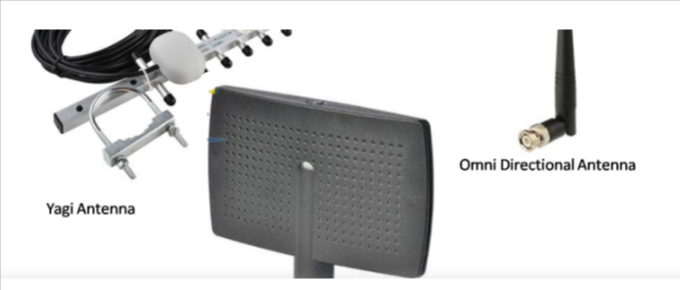Wireless antennas will be the facets of a hidden communications system that radiates and/or collects radiofrequency energy. It will always be connected employing a low loss coaxial cable using the idea for an electrical amplifier, splitter, and filter or right to wireless devices.
For outdoors usage, wireless antennas are often attached via mounting clamps with a mast or perhaps the side from the building via wall mounts. Wireless Antennas used inside are often ceiling mounted or connected to the wall.
An invisible antenna also an extremely important component of APs. The organization class APs uses exterior wireless antennas for far better results. ‘cisco’ uses several types of antennas with 802.11 APs. The type of antenna is determined by deployment conditions, layout, and distance coverage. APs could use. The figure below illustrates the general type of Wireless Antennas.
Omni Directional Wi-Fi Antennas
Omnidirectional antennas cover 360-degree areas and so are better with an open position for instance hallways, conference rooms, and out of doors areas. This sort of antenna transmits out and receives signals every which way.
The Omnidirectional antennas are usually applied to Wi-Fi routers and mobile adapters that support connections from the 3 major directions. Wi-Fi devices and APs usually use fundamental dipole antennas in the rubber duck design. These antennas will frequently have again between 2 and 9 dBi.
Directional Wi-Fi Antennas
Directional antennas put the lobs in the specific direction. The directional antenna provides better gain. Directional Wi-Fi Antenna increases the signal strength while receiving and transmitting.
The disadvantage in the directional antenna could it be transmits and receives strong signals just one way and less signal strength in many other directions. Directional antennas are frequently familiar with extend all the different a Wi-Fi network into hard-to-achieve parts of structures or possibly in situations where 360-degree coverage unnecessary.
Yagi antennas
Yagi antenna can be used as extended-distance communication. A Yagi antenna is a different type of directional radio antenna you should use for extended-distance Wi-Fi networking in the specific direction. These antennas are extremely high gain coupled with outdoors APs to improve the gain around 12 dBi or greater.
MIMO technology elevated wireless bandwidth. The IEEE 802.11n/ac/ad standard uses MIMO technology. The MIMO technology uses several antennas to send more data than possible employing a single antenna.
Four antennas enables you to increase throughput. All routers will not function as the same. For example, 802.11n routers have a very capacity of 150 Mbps one Wi-Fi radio with one antenna. We could convey more data exceeding one radios and antennas in parallel. We could boost the radio for the network in parallel. Each radio will heighten the 150 Mbps data speed to the router.
